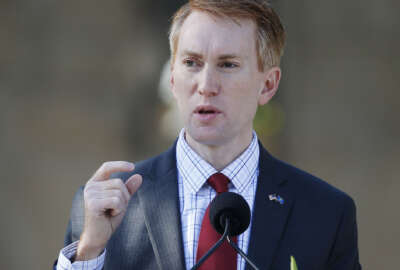
Park Service growing forests without growing maintenance backlog
The National Park Service has nearly $12 billion in maintenance backlog it needs to clear. Bob Wilbur, chief of the Park Facility Management Division, has a plan to...

The National Park Service has a deferred maintenance backlog equal to the price of an aircraft carrier: $11.9 billion. Make a list of all the different types of projects that need attending to at more than 400 park units nationwide, and you have the facilities maintenance task list of a major city.
With that many projects and not enough money to fund them all, picking and choosing what gets done — and when — becomes daunting task.
“We don’t have enough funding to address all the needs across the service.” Bob Wilbur, chief of the Park Facility Management Division of the National Park Service, told Federal Drive with Tom Temin. “As you would in your own home, you need to prioritize where that money is going to go to.”
Wilbur is a new addition to the Park Service, coming on board as the Park Facility Management chief with the agency a year ago. His 26 years in facilities management at the Coast Guard gave him the expertise to know what the needs of different regions across the U.S. become due to various climates. He said jumping from base to base and working in places like Puerto Rico, Alaska, the West Coast and Maine gave him a “pretty good cross-section” for understanding the Park Service’s needs on a national level.
Wilbur said the Park Service tackles the deferred maintenance backlog through a capital investment strategy, which puts money in the budget toward the assets with the greatest need.
“We have different optimizer bands for different facility assets ranging from 1 to 5; 1 being the most important and 5 being the least.,” he said. “Our capital investment strategy has a scoring system that looks at financial sustainability and visitor use and other factors, and based on that score is how we prioritize what projects are funded and what are not based on the funding level Congress provides us and the fees that we collect in the parks.”
Congress sets the Park Service’s budget with help from the Office of Management and Budget. Wilbur said the agency’s working relationships with Congress and OMB have helped it keep funding at an even keel to tackle it bit by bit.
“Congress and OMB have been very supportive of the National Park Service, especially over the past couple of years considering some agencies have had their budgets reduced. [We’ve] actually received additional funding to address our deferred maintenance. I think Congress and OMB, as well as the American public, are very supportive of the Park Service and maintaining our facilities.
Over time, the deferred maintenance backlog has shrunk at a slow, but steady pace. Wilbur said the agency has noticed its “high priority assets are improving” as the rate of growth of the backlog drops, which is “good progress.”
Part of that has been thanks to volunteer initiatives, which help cut costs for facilities maintenance jobs that don’t require professional contractors.
“Volunteers are a huge part of the National Parks Service,” he said. “Getting that labor for free is really great and in some instances. They can help out in facilities maintenance divisions. We reach out to youth corps across the nation to try to mobilize youth … to come out into the parks to do trail work and painting, and maintenance activities. We’ve been very successful over the past couple of years in many cases by leveraging those services … at half the cost of what it could cost a contractor at some cases. It’s real advantageous to have those relationships with the youth cores and have them in our parks.”
Wilbur said safety for visitors and staff always takes the highest priority for any facilities under the Park Service, but after that comes factors like how frequently an asset is visited or how urgently severe repair and rehabilitation work needs to be done.
One example plaguing famous national parks like Yellowstone in Wyoming and Yosemite in California is traffic jams due to nearby congestion from metropolitan areas or visitors stopping cars on narrow paths to take pictures of wildlife. Wilbur said seemingly straightforward projects like road widening can reach hundreds of thousands of dollars alone.
When rehabilitation and repair does make it to an asset, Wilbur said budgeting may become only a small part of a difficult project
“The challenge that we have is all that infrastructure is spread across the lower 48 as well as Puerto Rico, Alaska, Hawaii and other places,” he said. “In some places, it’s in an urban setting where the infrastructure is very accessible. In other cases, you’re in a very rural or remote area and there’s not a lot of support. It just makes managing and maintaining that infrastructure a lot more challenging.”
But as the Park Service fixes high priority issues at the areas that need it most and the backlog becomes more manageable, Wilbur hopes he can work initiatives like accessibility, green energy and sustainability for both the parks and visitors and improved housing conditions for employees and their families who live on site at some of the parks.
For now, Wilbur’s dedication toward the Park Service’s mission and to reducing the backlog remains resilient.
“Our emphasis has been and will continue to be to buy down the deferred maintenance on our most important assets. That’s what we’ve told Congress and the American people we’re going to do, and we’re going to do it,” he said.
Copyright © 2025 Federal News Network. All rights reserved. This website is not intended for users located within the European Economic Area.




